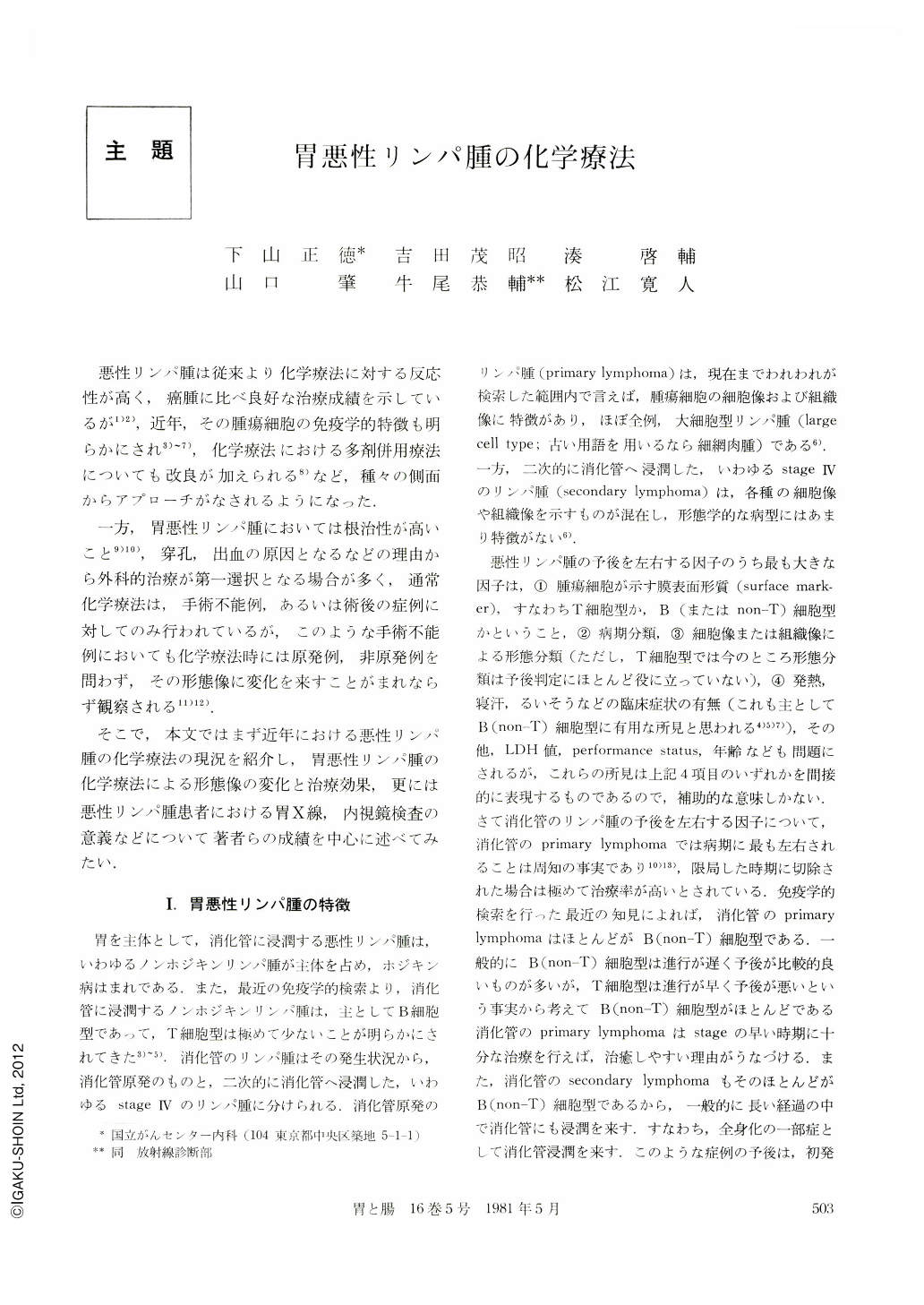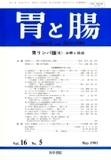Japanese
English
- 有料閲覧
- Abstract 文献概要
- 1ページ目 Look Inside
- サイト内被引用 Cited by
悪性リンパ腫は従来より化学療法に対する反応性が高く,癌腫に比べ良好な治療成績を示しているが1)2),近年,その腫瘍細胞の免疫学的特徴も明らかにされ3)~7),化学療法における多剤併用療法についても改良が加えられる8)など,種々の側面からアプローチがなされるようになった.
一方,胃悪性リンパ腫においては根治性が高いこと9)10),穿孔,出血の原因となるなどの理由から外科的治療が第一選択となる場合が多く,通常化学療法は,手術不能例,あるいは術後の症例に対してのみ行われているが,このような手術不能例においても化学療法時には原発例,非原発例を問わず,その形態像に変化を来すことがまれならず観察される11)12).
The results of combination chemotherapy for nonHodgkin's lymphoma are reviewed and summarized. According to these results, VEPA or CHOP therapy is recommended as first choice in diffuse lymphoma and then MEV or COM therapy as second choice. In nodular lymphoma, more mild combination chemotherapy such as COP therapy is recommended as first choice, and COPP, COP-Bleo, VEPA or CHOP therapy as second choice. About 70% of patients is expected to be induced into complete remission with cure of at least 30% of patients with advanced stage, if the most adequate chemotherapy mentioned above is applied to the patients for enough periods. The initial treatment had a great influence on prognosis of the patients with diffuse lymphoma.
In the gastric involvement of lymphoma, however, surgical therapy is usually selected as first choice because of the high resectability and the occasional complication of gastrointestinal bleeding or perforation. Hence, chemotherapy is usually indicated to unresectable cases or the cases with secondary involvement of the stomach. Even in those far advanced lesions the change of macroscopic appearance is often observed roentgenographically and endoscopically with the start of chemotherapy.
We have discussed about the relation between these changes (Response) and the effect of chemotherapy (Prognosis) within the gastric involvement of maligpant lymphoma.
In surm.
1) Soon after the start of chemotherapy, the change of macroscopic appearance was nearly always observed roentgenographically and endoscopically, wherever was the primary site.
2) On 13 cases with far advanced gastric lesions, the response of macroscopic appearance observed was grossly classified into following four grades; Progressive disease (one case), No change (one case), Minor (five cases) and Major (six cases) improvements. Minor improvement corresponded to the change to be superficial lesion from the far advanced tumor, or to the disappearance of marked elevation and deep excavation from the original lesion. In this grade the malignancy of lesion could be still suspected. In Major improvement, the superficial lesion turned into ulcer scar or non-specific changes macroscopically, and their malignancy could not be suspected on the x-ray and endoscopic observations.
3) Compared the prognosis between the six cases with Major improvement and the other seven cases, the former showed extremely better survival rate than the latter. The above may indicated that the response of macroscopic appearances observed in x-ray and endoscopic examinations should be available for the evaluation of chemotherapy effects.
4) Macroscopically small and benign-like lesion in one case was detected as the secondary involvement of malignant flat elevated lymphoma. In this lesion the chemotherapy effect was also observed as the change of macroscopic appearance into non-specific lesion.
5) The above may show that in the patiens with malignant lymphoma, the precise observations on the x-ray and endoscopic examinations including biopsy are indispensable not only for the evaluation of chemotherapy but for the determination of the stage classification or of the therapeutic indication.

Copyright © 1981, Igaku-Shoin Ltd. All rights reserved.


